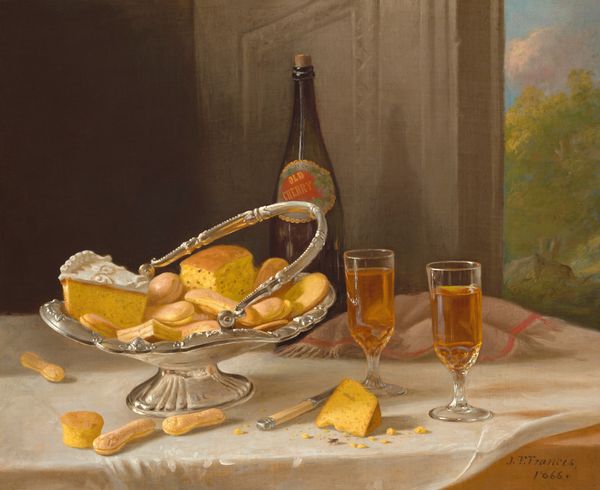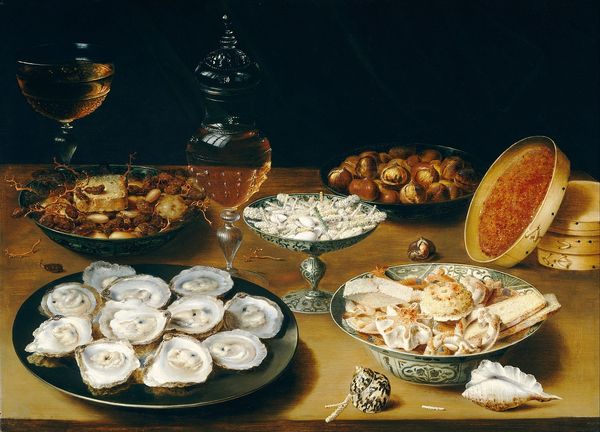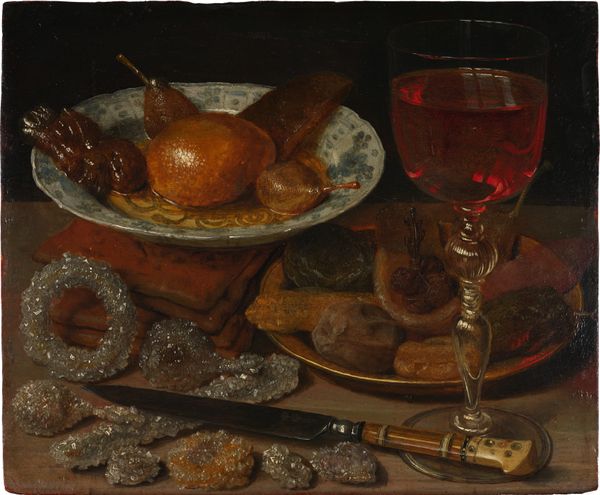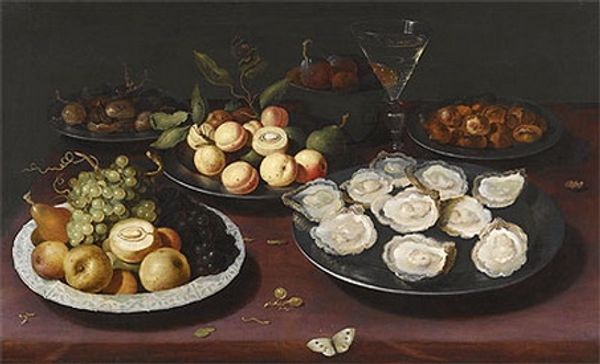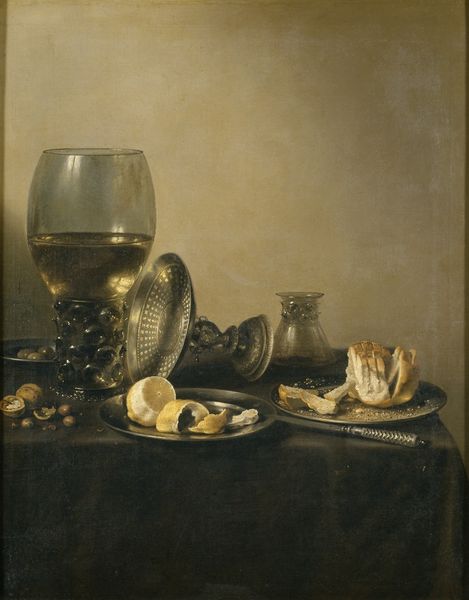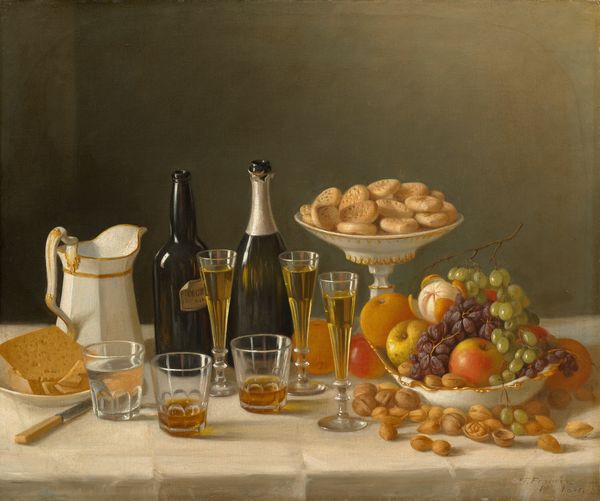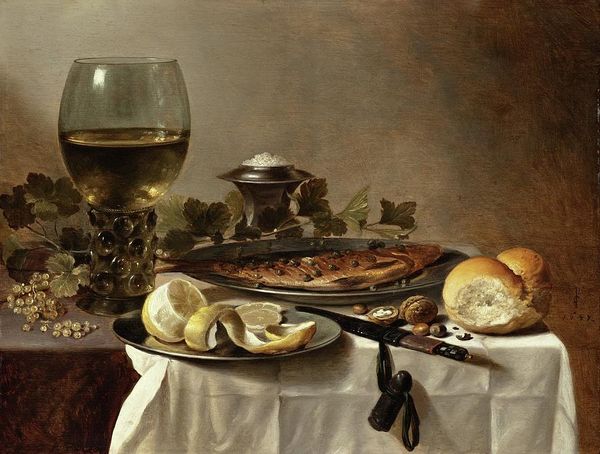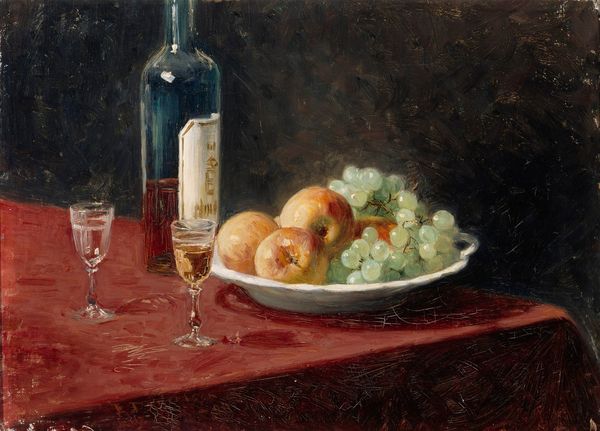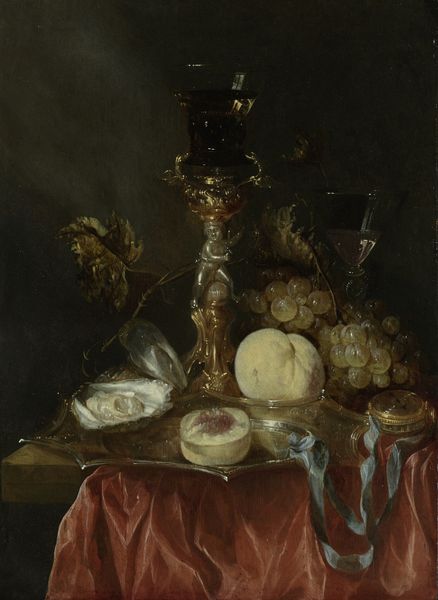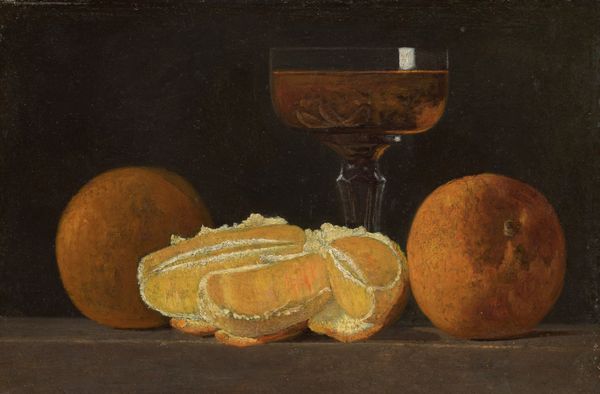
oil-paint, oil, earthenware
#
baroque
#
oil-paint
#
oil
#
oil painting
#
earthenware
#
food art
#
14_17th-century
#
earthenware
#
genre-painting
#
realism
Dimensions: 21.8 x 17.0 x min. 0.2 cm
Copyright: Public Domain
Curator: We're looking at "Still Life with Bread and Sweetmeats," a captivating oil painting by Georg Flegel, dating back to around 1633 to 1636. It's currently housed at the Städel Museum. Editor: Mmm, looking at it, I immediately get a feeling of simple pleasures, a gentle domesticity. And also, surprisingly, a bit of gluttony with all those sweet treats! It's all so precisely rendered. Curator: Precision is key. Flegel belonged to a tradition of painters focused on representing the burgeoning merchant class. Genre painting really bloomed during this time. These works celebrated material comforts, subtly affirming the values of a new social order through seemingly simple things. Editor: So, it's not *just* about a bread and sweets. The items are placed and carefully positioned as symbols of wealth and trade? I also think this one seems a bit playful with the lone butterfly. Like a fleeting moment of joy in this still and arranged world. Curator: Absolutely. Each element served a purpose. The earthenware bowl itself speaks to the trade routes of the time, but also is a signifier of refined living. Plus, the naturalistic rendering—the glistening of the glass, the textures of the bread—served to further assert the artist’s technical skill and the value of what was displayed. It's not just painting what you see, but painting status. Editor: It’s interesting how those everyday objects become like actors on a tiny stage, playing out larger stories of commerce and consumption. And they even show wealth and societal changes even with their meticulous rendering, almost photographic-like detail, really pulls you in, wanting to touch and maybe… taste everything! Curator: Exactly! By transforming mundane objects into compelling narratives, Flegel and his contemporaries reflected the changing values and social dynamics of 17th-century Europe. Editor: And really, they've preserved this perfect little bite of history. Now that is a feast for the eyes!
Comments
stadelmuseum almost 2 years ago
⋮
This arrangement by the Frankfurt still-life painter Georg Flegel shows which items the prosperous citizens of the trade fair and trading metropolis on the Main were particularly fond of. Sugar, an expensive imported commodity from Madeira, which reached the Frankfurt Fair via Antwerp or Venice, was in great demand. Fruits refined with rock sugar can be seen here in all sorts of crystalline forms. The butterfly, the wasp and the beetle at bottom right remind the viewer of the transient nature of these delicacies.
Join the conversation
Join millions of artists and users on Artera today and experience the ultimate creative platform.
